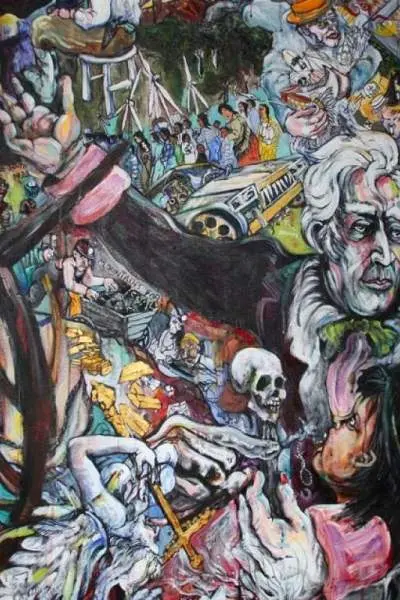Bronze Magic: 10 Places to Find Preston Jackson's Artwork in Illinois
Aug 24, 2023 • Arts, Culture & History

Preston Jackson’s pieces showcase a unique ability to shape raw materials into evocative forms that connect and resonate deeply with their onlookers.
As a celebrated artist whose work enriches the state’s cultural landscape and contributes to its historical and social narratives, Preston Jackson matters deeply to Illinois and those who call the Middle of Everything home. With his profound ability to capture the essence of individuals and moments in time, his sculptures serve as a poignant reminder of Illinois’ diverse and complex history.
The themes of his beloved work relate personally and deeply to African American history, civil rights, and the struggles and achievements of marginalized communities. Only through his masterful sculptures are stories such as Martin Luther King’s and Jean Baptiste Point du Sable’s brought to the artistic forefront to foster understanding, empathy, and dialogue with all people of varying backgrounds and demographics. Jackson’s work plays a crucial role in broadening the perspective of visitors and residents alike.
As an educator and advocate, he inspired generations of aspiring artists to explore their creative potential and engage with important social issues.
Many of Jackson’s pieces are spread throughout Illinois, giving the discerning traveler a bevy of options to discover. To assist, we created a helpful guide that features ten of the top spots to see his work throughout the state. Discover a symphony of form and emotion that will invite you to explore the past, celebrate the present, and envision the future.
“Irv Kupcinet,” Chicago
Location: Northeast corner of East Wacker Drive
In 2005, a new memorial was unveiled featuring the luminary, Irv Kupcinet. The bronze 9-foot-tall statue was commissioned by the late writer’s family as a manifestation of his enduring and profound legacy. The statue displays Kup holding a final edition of the Chicago Sun-Times beneath his right arm as a gesture to the journalistic realm he was known for shaping. Though the statue premiered on what would have been Kup’s 94th birthday, this sculptural representation is a tribute that transcends time.
“A Need to Remember,” Chicago
Location: CTA 69th Street Station
Fashioned from bronze and stainless steel in the form of a dual-faced partition, this iconic sculpture artfully contrasts modern and historical depictions of African American culture. Jackson created this masterpiece as a conduit for imparting lessons from history while kindling inspiration for both the current epoch and the times ahead.

“Frederick Douglass: In Remembrance,” Champaign
Location: Champaign Public Library
This sculpture takes the form of an archway, resembling a two-way door that signifies a passage between the past and future—one visitors must cross to enter the library. The central door remains fixed and suspended in a state of equal openness and closure. The horizontal bars within the door convey a sense of confinement and the imagery evokes the imminent Civil War and the events at Harper’s Ferry—significant historical moments during Douglass’ lifetime.

MLK-Inspired Sculpture, Urbana
Location: King Park
Nestled within King Park is a sculpture that draws inspiration from the legacy of Martin Luther King Jr., serving as both a tribute to his profound impact and a visual homage to the pivotal moments that defined the Civil Rights movement. It stands as a poignant reminder of the Montgomery Bus Boycott, immortalizing a significant turning point in the struggle for equality. Further inspiration for the piece also comes from the Edmund Pettus Bridge, which became a rallying point for individuals advocating for voting rights.

“Acts of Intolerance,” Springfield
Location: Abraham Lincoln Presidential Library and Museum
Excerpted from the monument plaque, “Two charred chimneys rising from the smoldering rubble of burned-out buildings – these stark images from an old photograph were the inspiration for this unique sculpture. The sculpture commemorates the centennial of the brutal Springfield Race Riot of 1908.” Jackson crafted this piece as a way of confronting the past so that society can learn to develop the future together.

“1908 Race Riot Painting,” Springfield
Location: HSHS St. John’s Hospital
One of Jackson’s most beloved paintings, this iconic, acrylic-on-canvas portrait depicts the healing role that the women of HSHS St. John’s Hospital played in the aftermath of the 1908 Springfield race riot. The portrait is currently on display in the first-floor lobby inside the new Women’s and Children’s Clinic.
“From the Cottonfield to the Battlefield”, Decatur
Location: Preston Jackson Park
Since it was dedicated in 2009, visitors of the park have looked in awe and amazement at this beloved sculpture that honors the thousands of African American soldiers who fought tirelessly in defense of equal rights for all in the Civil War. As a result, and because Jackson is a native of Decatur, the section of North Water Street from East North Street to East William Street has officially been named Preston Jackson Park, as of 2022.
“Jean Baptiste Point du Sable,” Peoria
Location: Carver Center
Jean Baptiste Point du Sable was a highly educated man who escaped slavery and fled upstream where he lived in Peoria and owned hundreds of acres of land for many years. He later founded a fur trading emporium, becoming recognized as the "Founder of Chicago.” Because of du Sable’s heroism and contributions to history, Jackson honored him with a statue outside the Carver Center.

“Bronzeville to Harlem”, Peoria
Location: Peoria Riverfront Museum
In the heart of the Peoria Riverfront Museum Gallery, known as “The Street,” lies the awe-inspiring masterpiece called “Bronzeville to Harlem: An American Story.” This sculptural marvel took a quarter of a century to create and is composed of hundreds of individual bronze and steel figures. The masterpiece is interspersed with relief sculptures of automobiles navigating sculpted streets, buildings that breathe with history, and even a truss bridge. This cityscape serves as a whimsical exploration of the individual narratives that converge to shape urban landscapes—deftly weaving together stories from locales such as Peoria and the iconic Bronzeville neighborhood in Chicago. It also pays homage to the impact of the Harlem Renaissance and echoes the intricate connections that define the American experience.

A Bronze Façade & Doors, Collinsville
Location: Cahokia Mounds Museum
The Interpretive Center of the Cahokia Mounds Museum is where you’ll find a Bronze Façade and set of doors created for the museum by Jackson. Each of the Bronze Doors weighs 800 pounds, and the bas-relief panels depict birds as they fly over Monks Mound. Inside the façade depicts people, the Stockade, Monks Mound, a falcon, ravens, and more. Cahokia Mounds, a UNESCO World Heritage Site and Historical Landmark, preserves the archaeological remains of the Mississippians and their civilization.
NOTE: The Interpretive Center is currently closed for tours due to renovations. The Center is set to reopen in 2024
Recently, Jackson and Dilla, one of the most prominent and dopest modern public historians, collaborated on a recent interview. Watch them discuss the impact of African American culture and Illinois’ proud and diverse history.
To find out more about the lasting impact of African American culture and Illinois’ proud and diverse history, watch Chicago’s own TikTok historian Shermann “Dilla” Thomas interview Mr. Jackson as part of the Discover Illinois with Dilla series.



